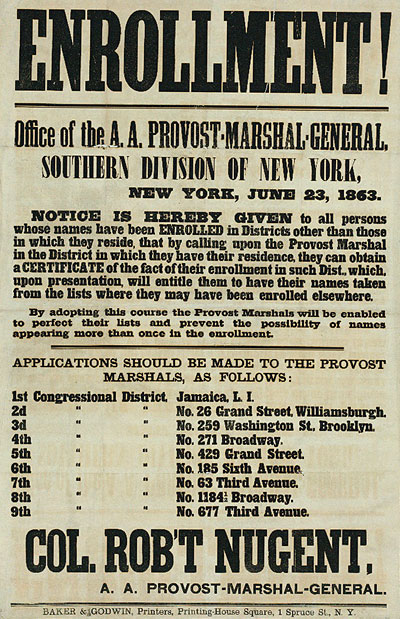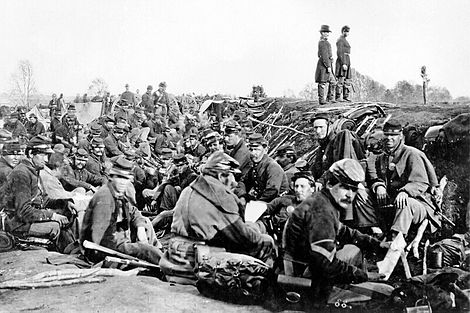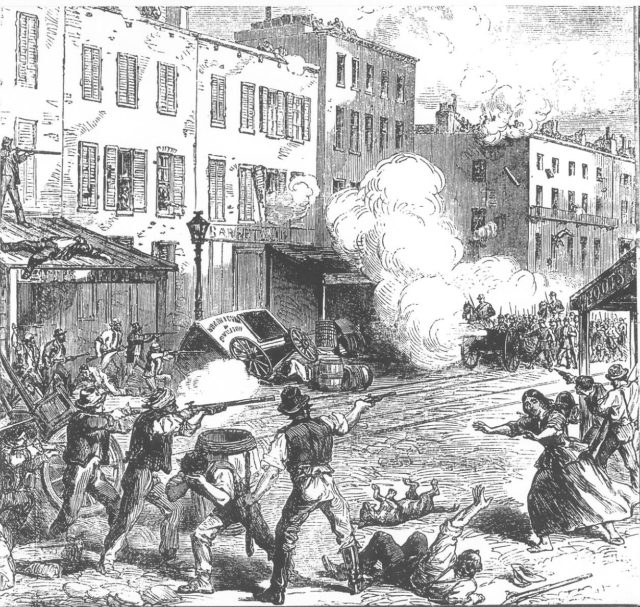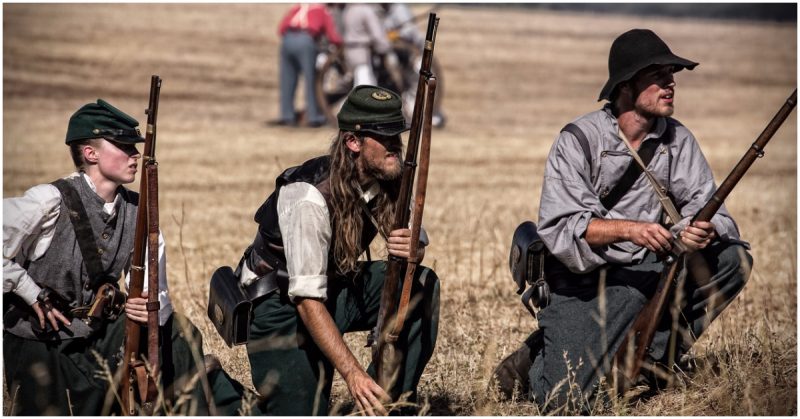In America, the draft is a controversial subject. Many people support it, as they feel it is necessary for a country at war, while many people are against it, as they feel they should not be forced to go to war. Whatever your stance is, the draft has always created some controversy, from Vietnam to way back in the past, as in the Civil War draft.
The rules and regulations used in the Civil War, are similar to that employed today. A group of men, who were a certain age, would be drafted – up to a certain amount. Both the North and the South ran drafts during the war. It was to make sure there were enough troops available.

The Southern Draft
The Confederate states’ draft began in 1862, not too long after the war broke out. It differed from the North’s draft. At first, men between the ages of 18 and 35 were called up and were required to serve three years if selected. The age group grew as the war went on, with the final draft covering those aged between 17 and 50 years. With the increased age group, there came more ways to get out of serving if selected.
The Northern Draft
At first, some of the Northern States used the threat of the draft to increase enlistment. If people were scared, they might be more inclined to sign up. It helped, but government officials knew it would not be enough.

The Militia Act of 1862, allowed the Union Army to utilize African Americans. It gave a boost to the front line of the Army. African Americans were treated differently from their white counterparts. In general, they made $10 a month. White men made $13 a month. Both were subjected to a $3 deduction for clothing. They were also, at times, not provided with proper medical care. In 1864, Congress changed the pay structure, approving equal pay.
The act gave the Union a boost in soldiers, but still, there were not enough volunteers. They needed more troops. The Enrollment Act of 1863, sometimes called the Civil War Military Draft Act, was the answer to that problem.
It came with a lot of controversies, mostly due to who had to enroll, which was every male that was a citizen, between the ages of 20 and 45. Included, were immigrants who had requested citizenship. If called to duty, they had to go. One exception was that married men could not be drafted until all available unmarried men had been drafted.
Exemptions and Substitution
The overall idea of this draft caused a lot of issues and rioting, but there were ways to get out of it if selected. For example, a draftee could call in a substitute. If his brother had not been drafted but was more suitable, he could be substituted.
However, the easiest option of all was to pay a fee. As with a lot of things in life, issues can usually be resolved with cold, hard cash. A draftee could pay his way out of the draft, but it was a hefty price. If he wanted out, he had to pay a $300 fee. Most servicemen received just $10-$15 a month.
There was a catch. The payment might only exempt a draftee from that particular lottery. If called up again six months later another payment would have to be made. Some historians estimate around 160,000 to 200,000 men either paid the $300 fee or found a substitute to avoid being drafted.

The ability to buy your way out was repealed in the Spring of 1864. While $300 is a lot of money, it was cheaper than hiring a substitute. Estimates for hiring a random sub are around $1,000; an enormous amount of money. Towns could choose to raise their taxes and the increased revenue paid for substitution fees. They did not want to lose their local workforce. If most of the men went to war, the town would suffer in loss of workers and loss of revenue.
These options, however, were only available to those who could afford them. They separated the rich and the poor. The wealthy could afford to get out of the draft; the poor could not.
Unrest
As the decision to draft men unfolded in 1863, people rioted. When the government tried to institute the draft in New York City in July 1863, things quickly got out of hand. Government buildings were torched, and rioters fought in the streets against troops. At the time, it was claimed over 1,000 people were killed in the incident. It is now believed around 120 people died in the riots. About 300 people were injured with around half of them police and troops of the Union Army.
The reason for the riots came down to wealth. People were upset that you could buy your way out of the draft, and if you could not, you would be forced to fight or hire a substitute, with money you did not have. The riots lasted just three days and came to an end after several clashes with soldiers turned deadly.
Punishment for Evasion
The penalty for evasion was defined in March 1865. If a draftee evaded or deserted, his punishment was losing citizenship. The war, however, ended shortly after this was passed.
